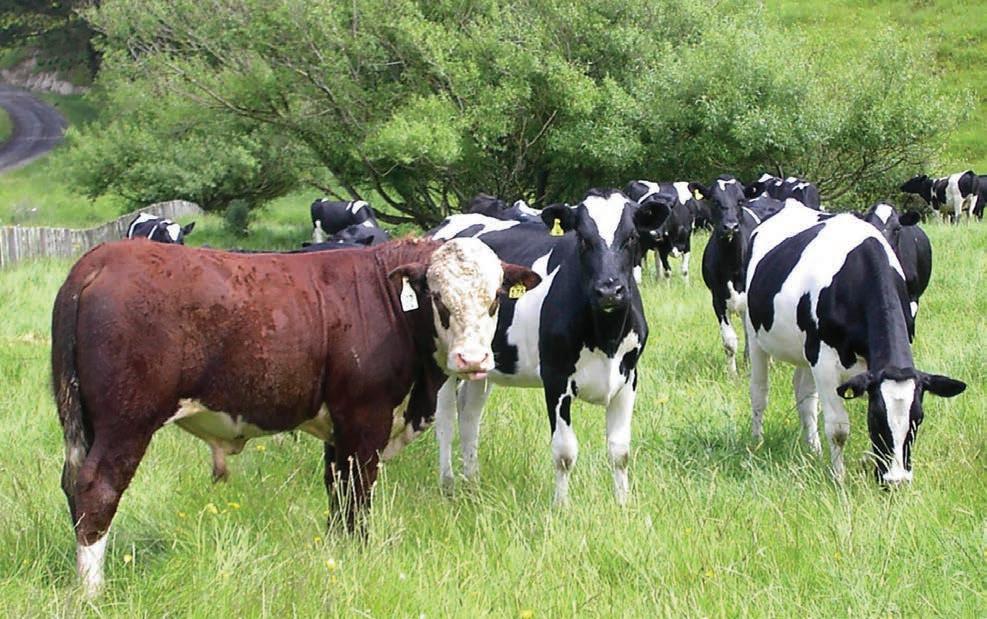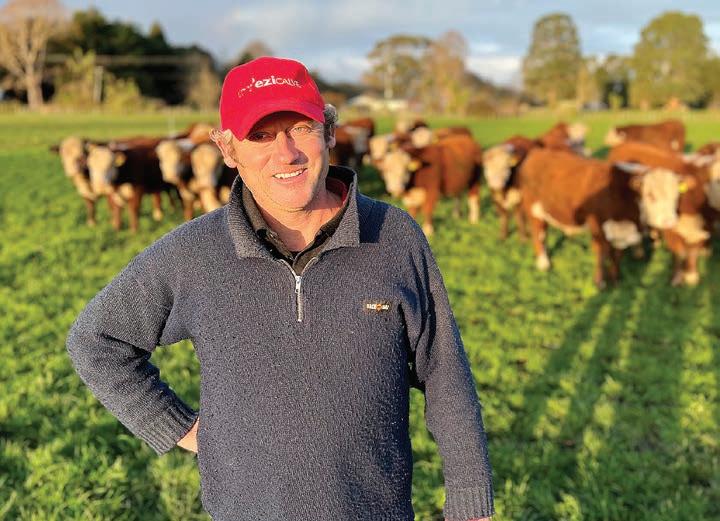
1 minute read
Bulls of opportunity
By Samantha Tennent
The ban on live cattle exports has given some farmers a much-needed boost.
Asurge in autumn bull sales was a welcome surprise for Manawatū sheep and beef farmer Will Morrison. The surge was an unexpected ripple effect from the ban on live cattle exports by sea.

“The ban on live export has left a big hole in the market. I hadn’t thought about how it would change the dynamic in the market so much,” Morrison says.
“But we’ve got farmers that used to use Friesian bulls, targeting the export market, now looking for other avenues for their business.”
Long-standing client Logan Hastings was one of those farmers. Looking at his options after the export market closed, he knew the Hereford breed would give him flexibility.
“We have used a lot of different beef breeds over the years, but Herefords have a reliable market and give us options,” Hastings says.
“We can flex our farming system. Typically we sell half of the Hereford calves to store and finish the rest, but we can flick more off sooner if we run out of feed, or carry more through to the works. They keep our options open.”
He found with other breeds, buyers were suspicious of Jersey content if they threw any crossbreed markings –but the distinctive Hereford markings from Ezicalve offspring make them a popular choice.
He has been buying Ezicalve bulls for several years, sometimes through the bull sale or just by calling to order.
“We can ring any time, and we have a lot of faith in their bulls as they’ve been breeding for a long time so they keep getting better and better,” Hastings says.
“And their temperament is great, they’re almost too quiet.
“They certainly won’t injure someone in the yards, they’re just big teddy bears.”
A quiet temperament is high on the priority list for Ezicalve bulls, along with strict criteria for calving ease, low birth weight, good growth and carcase quality.
Morrison farms near Marton in Rangitikei. The Ezicalve line has been developed with the Cranstone family, who farm closer to Whanganui. It was designed to target the dairy industry, using extensive genetic information to establish lines of bulls to give dairy farmers confidence.
“I was travelling around the United Kingdom in 2006 and had plenty of time on buses so that was when I was hatching the idea and we kicked off around 2007, 2008,” Morrison says.
“And now we’ve been selling for a long time and have a good number of bulls available.
“It’s all about minimising risk and giving businesses options and with the year we’re facing and what’s on the horizon it’s becoming more critical for farmers to reduce risks and maximise outputs.”
More than half of Ezicalve bulls sold go to dairy farms that integrate beef into their system. n









